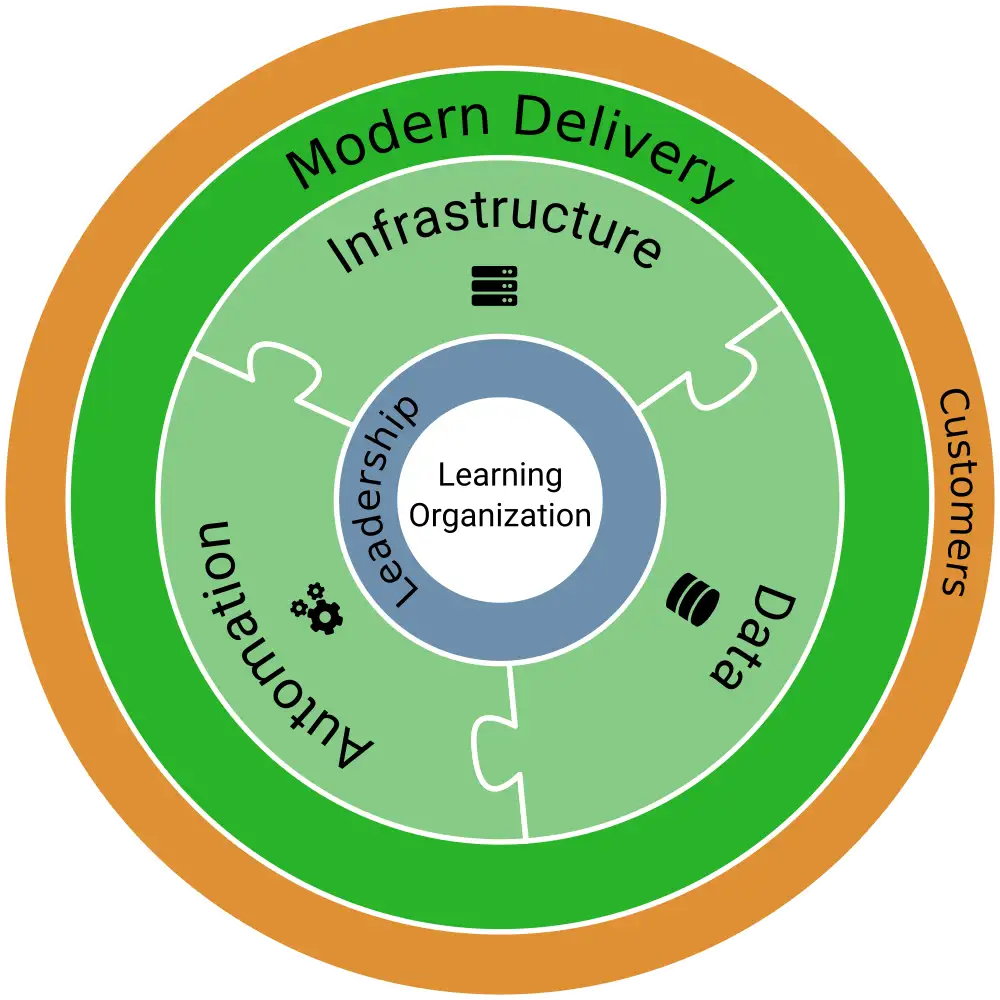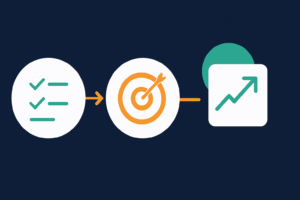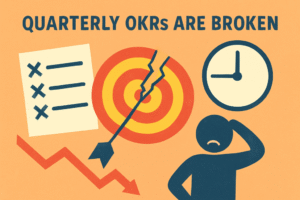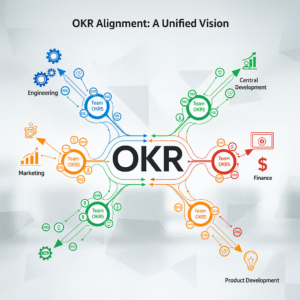Our ultimate objective is to help our customers be successful. We have strong opinions on what successful companies look like and what is important for an organizational culture to support sustainable success, but that is a topic for another time. For the technology organizations or departments we work with, our objective loosely translates to
“help our customers get the biggest return of their IT investment”
Many organizations put their faith in Agile and DevOps practices to achieve this, but fail to get the results they are hoping for.
In order to really achieve those results, all areas of the organization need to be aligned. Just applying the latest Agile practices in software delivery teams won’t do the trick. The same is true of only applying DevOps practices to support a delivery pipeline or moving from traditional infrastructure without developing an understanding of the implications. Sound data governance is crucial as well, but again cannot achieve the objective all by itself.
Enter Modern Delivery
In order to not lose track of the real objective, we started using the term modern delivery instead. Modern delivery is the combination of technology areas and disciplines that, when aligned, enable business agility.

Assessing maturity
When assessing maturity of a technology organization’s delivery capability, we consider four incremental maturity levels, each one forming the foundation for the next maturity level. They are described below from a results-oriented perspective.

Visibility
At this maturity level, the delivery organization has visibility in the various aspects of the process and the progress of delivery along this process. Data is available to analyse various aspects of delivery and assess opportunities for improvement and other challenges. At this maturity level, the delivery organization is not necessarily capable of controlling how delivery is organized, but is at least not running blind.
Control
The delivery process is controlled, with policies and controls in place to ensure consistent delivery and respond to challenges when they occur. Typical improvements result in predictability. In order to reach this level of maturity, visibility needs to be achieved first.
Optimization
At this level of maturity, processes are regularly reviewed and tuned to reduce waste and take advantage of opportunities discovered along the way. Typical improvements result in cost and time saving.
Anticipation
When reaching this maturity level, instead of just responding to changes in the market and the need for delivery, the delivery process can drive innovation and business opportunities. The process is not just improved in response to a challenge, more often it is improved to create new opportunities.
Feedback
Modern delivery resonates with our customers who demonstrate a deep understanding of concepts like Agile & DevOps practices and governance at scale in general. The deceptively simple maturity model has received positive feedback as well. It explains what the organization’s capabilities are and leaves little room for misinterpretation. It also helps organizations understand better what level they want to target. While we use this model, we continue to increase our own understanding of how to assess an organization against it and provide advice to increase the maturity.
Stay tuned!



